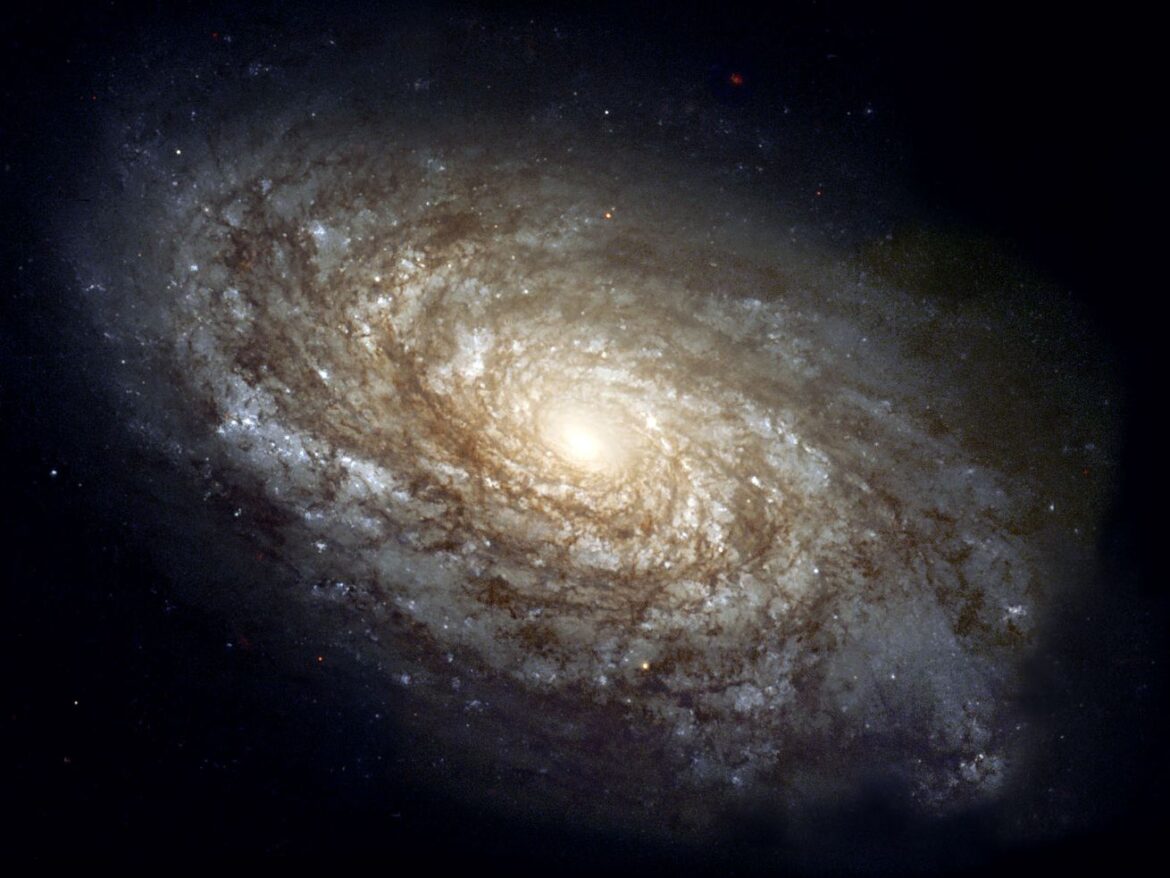Some unanswered scientific questions loom out in the universe. Others reside in our homes.
In March 2021, Vox launched Unexplainable, a podcast focused on unanswered questions and everything we learn by exploring the unknown. One hundred episodes later, our producers have scoured the land, the sea, the animal kingdom, the human body, the solar system, and the universe to explain the blank spaces in our collective knowledge.
In this process, we’ve learned a lot: about how questions get answered, who sets the scientific agenda, and the hope that resides in a great question. Unanswered questions matter because they help us imagine the future; all progress starts by asking questions, and all questions come from reckoning with what’s not known.
But perhaps the biggest, most exciting lesson Unexplainable’s producers and reporters have learned is just how many unanswered questions there are! We’re 100 episodes in, with no signs of running out of topics for stories.
These mysteries exist in all sizes — literally. From huge mysteries that involve the area of the entire universe to mysteries that reside in small spaces, like in the crevices of our homes, on the starting line of a track race, or tucked away deep in a forest. It’s delightful to learn that, sometimes, these little mysteries are no more resolved than the cosmic ones. So here are some of our favorite big mysteries, and our favorite smaller ones (which are still big in their own way).
(Have a great mystery for Unexplainable to explore? Email us: [email protected])
Biggest Mysteries
What is the universe made out of?
/cdn.vox-cdn.com/uploads/chorus_asset/file/22053291/heic1506f.jpg)
NASA
It’s a simple question that’s also bafflingly unanswered: What makes up the universe?
It turns out all the stars in all the galaxies in all the universe barely even begin to account for all the stuff out there. Most of the matter in the universe is actually unseeable, untouchable, and, to this day, undiscovered. It’s called dark matter, and despite searching for it for decades, scientists still have no idea what it is.
How might they find it?
Further reading: Dark matter holds our universe together. No one knows what it is.
How will everything end?
/cdn.vox-cdn.com/uploads/chorus_asset/file/24371303/STScI_01G8H1NK4W8CJYHF2DDFD1W0DQ.png)
NASA, ESA, CSA, STScI, Webb ERO
In the early 1900s Henrietta Leavitt, a Massachusetts-born “computer” who worked at the Harvard College Observatory, published a discovery that may sound small but is one of the most important in the history of astronomy: She found a way to measure the distance to certain stars.
Over time, scientists kept building on Leavitt’s ruler to measure the universe. As they used these measuring tools, their understanding of the universe evolved. They realized it was far bigger than previously thought, there are billions of galaxies, and it’s expanding: Those galaxies are moving further and further away from one another.
Astronomers also realized that the universe had a beginning. If galaxies are moving away from one another now, it means they were closer together in the past — which led scientists to the idea of the Big Bang.
It also led them to realize that the universe may, eventually, end.
Further reading: How scientists discovered the universe is really freaking huge
Where the heck does our moon come from?
/cdn.vox-cdn.com/uploads/chorus_asset/file/23630261/GettyImages_1354421254.jpg)
HUM Images/Universal Images Group
Before the moon landings, scientists thought they knew how the moon came to be. But then, Apollo astronauts brought samples back from the lunar surface, and those rocks told a totally different story.
“Geologists had found that the moon was covered in a special kind of rock called anorthosite,” Unexplainable senior producer Meradith Hoddinott explains on the show. “Glittery, bright, and reflective, this is the rock that makes the moon shine white in the night sky. And at the time, it was thought, this rock can only be formed in a very specific way: magma.”
The indication there was magma means the moon must have formed in some sort of epic cataclysm: “Something that poured so much energy into the moon that it literally melted,” Hoddinott says. Scientists aren’t precisely sure how it all played out, but each scenario is a cinematic story of fiery apocalyptic proportions.
Further reading: How Apollo moon rocks reveal the epic history of the cosmos
How did life start on Earth?
/cdn.vox-cdn.com/uploads/chorus_asset/file/24467042/857129344.jpg)
DeAgostini/Getty Images
For decades, scientists have been trying to recreate in labs the conditions of early Earth. The thinking is, perhaps if they can mimic those conditions, they will eventually be able to create something similar to the first simple cells that formed here billions of years ago. From there, they could piece together a story about how life started on Earth.
This line of research has demonstrated some stunning successes. In the 1950s, scientists Harold Urey and Stanley Miller showed that it’s possible to synthesize the amino acid glycine — i.e., one of life’s most basic building blocks — by mixing together gasses believed to have filled the atmosphere billions of years ago and adding heat and simulated lightning.
Since then, scientists have been able to make lipid blobs that looked a lot like cell membranes. They’ve gotten RNA molecules to form, which are like simplified DNA. But getting all these components of life to form in a lab and assemble into a simple cell — that hasn’t happened.
So what’s standing in the way? What would it mean if scientists actually succeed and create life in a bottle? They could uncover not just the story of the origin of life on Earth, but come to a shocking conclusion about how common life must be in the universe.
Further reading: 3 unexplainable mysteries of life on Earth
What killed Venus?
/cdn.vox-cdn.com/uploads/chorus_asset/file/23630254/PIA23791_fig2.jpeg)
NASA
“Hellscape” is the most appropriate word to describe the surface of Venus, the second planet from the sun. At 900 degrees Fahrenheit, it’s the hottest planet in the solar system, thanks to an atmosphere that’s almost entirely made up of carbon dioxide, which generates a really strong greenhouse effect. Clouds made of highly corrosive sulfuric acid are draped over a volcanic landscape of razor-sharp volcanic rock. The pressure on the surface of Venus is about 92 times what you’d feel at sea level on Earth.
Yet some scientists suspect Venus was once much like Earth, with a liquid water ocean like the ones that support life on our planet. This prompts an existential question for life on Earth.
“Venus and Earth are planetary siblings,” says Robin George Andrews, volcanologist and author of Super Volcanoes: What They Reveal about Earth and the Worlds Beyond. “They were made at the same time and made of the same stuff, yet Venus is apocalyptic and awful in every possible way. Earth is a paradise. So why do we have a paradise next to a paradise lost?”
There are two leading hypotheses. One is that the sun cooked Venus to death. The other is that volcanoes did. Figuring out which one occurred might help us understand the eventual fate of the Earth.
Further reading: Venus could have been a paradise but turned into a hellscape. Earthlings, pay attention.
Small and surprising mysteries
What insects live in our homes?
/cdn.vox-cdn.com/uploads/chorus_asset/file/23285894/GettyImages_904637674.jpg)
Getty Images/Mint Images RF
In the 2010s, a team of scientists went into 50 homes around Raleigh, North Carolina. Their mission: to scour the homes and find as many insect species as they could. What they discovered was quite surprising (and a bit gross): The average house was home to around 100 species of insects. These weren’t “dirty” homes or ones located deep in the woods with the windows left open.
Instead, the findings illustrated that the typical human dwelling is an ecosystem for more creatures than we’ve realized. Which provokes another question: What are they doing in there? And what can we learn from them?
Further reading: The dozens of bug species that live in your home, in one chart
Can plants … see?
/cdn.vox-cdn.com/uploads/chorus_asset/file/24222962/gr1_lrg.jpg)
Ernesto Gianoli/Trends in Plant Science
More than a decade ago, scientist Ernesto Gianoli made a remarkable discovery. He found a little vine in the forests of South America that had the ability to mimic the shape of other plants around it. The biggest and most provocative question is how.
“Plants have no brains or eyes,” Vox’s Benji Jones reports. “So how do they sense the shape of leaves around them and then copy it?”
Scientists still don’t know. But each possible answer — one being somehow these plants are “seeing” their surroundings, another being they are somehow influenced by the genetics of plants around them — could drastically alter our understanding of what plants are capable of.
Further reading: The mystery of the mimic plant
How fast can a sprinter start a race?
/cdn.vox-cdn.com/uploads/chorus_asset/file/24042531/GettyImages_1409199469.jpg)
Ezra Shaw/Getty Images
In July 2022, TyNia Gaither lined up in the second lane for one of her biggest races of the year: the semifinals of the 100-meter dash at the World Athletics Championships in Eugene, Oregon. The 29-year-old Bahamian sprinter crouched down into the starting blocks. The crowd grew quiet. She waited for the sound.
“I heard the gun go off, and I took off,” Gaither says. “And then I heard the gun go off again.”
That second “bang” meant officials had stopped the race. Someone had false-started, and Gaither was surprised to find out it was her.
Per the rules, Gaither was immediately disqualified. When she tried to contest the call to the race official, he showed her a replay. It didn’t show a visible false start. But then he pointed to a number, lit up in red: 0.093 seconds, the amount of time it took for Gaither to start after the gun fired. Yes: She had started after the gun went off, and was still thrown out of the race.
According to the logic underlying the rules, Gaither had started faster than humanly possible. Scientists say that’s likely wrong: We don’t know the fastest possible start to a running race.
Further reading: Runners can be disqualified for starting after the gun. What gives?
What is ball lightning?
For millennia, people have been telling stories about mysterious spheres of light that glow, crackle, and hover eerily during thunderstorms. They’ve been spotted in homes, in rural areas, in cities, on airplanes, and even passing through windows.
They seem out of this world, but scientists believe they are very much of this world. These apparitions are called ball lightning, and they remain one of the most mysterious weather phenomena on Earth.
Ball lightning usually only lasts for a few moments, and it’s impossible to predict where and when it’ll show up. You can’t hunt ball lightning and reliably find it. Ball lightning finds you.
It’s rare, but many people have seen it. Scientists don’t know exactly where it comes from, but that hasn’t stopped them from trying to make it themselves.
Further reading: Ball lightning is real, and very rare. This is what it’s like to experience it.
Why do we have anuses — or butts, for that matter?
/cdn.vox-cdn.com/uploads/chorus_asset/file/22746211/GettyImages_1257486709.jpg)
Getty Images
This is a question we never even knew we wanted to answer — until we heard the Atlantic’s Katherine Wu explain that “the appearance of the anus was momentous in animal evolution.” Before the appearance of the anus, animals had to eat and excrete through the same hole. The anus allowed for a more efficient system, and allowed animal life on Earth to grow bigger and take on new shapes and forms.
But scientists don’t have a complete picture of the evolutionary history here; they don’t know which creature developed the anus first, and when. “It’s so hard to study something that must be millions and millions of years old and doesn’t fossilize,” Wu says.
And then there’s a whole other question: Why is the human butt so big, compared with other mammals?
Further reading: Katherine Wu’s “The Body’s Most Embarrassing Organ Is an Evolutionary Marvel,” at the Atlantic.
And so many more …
In between the biggest and smallest mysteries: You guessed it, there are only more mysteries. From the beautiful mysteries of love, to how our senses work, to the frustrating questions about a health condition like endometriosis, to whether animals can grieve, or if scientists understand the AI programs they create, our world is still beautifuly haunted by mysteries. What else is out there for us to discover?

/cdn.vox-cdn.com/uploads/chorus_asset/file/22397031/BallLightning_Lede2.jpg)


